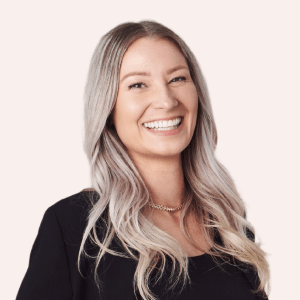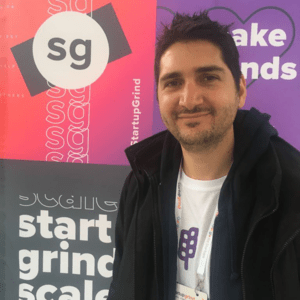I’m a computer engineer transformed into a ⚙️ passionate No Coder ⚙️. Reach out if you want to get introduced or learn more about the No Code world!
It’s not so complicated: The Jobs To Be Done framework
Jobs to Be Done framework is not just something that helps your organization in terms of honing in your marketing message and also with product.
According to Kristie Holden, it transforms your entire organization.
Across from QA, Technical Support, Customer Service, Marketing, Sales, Customer Success, Product.
The whole idea is about removing the guess-work, and instead of building something or doing something and hoping it will work, you know it will work because you've done that initial foundational work to validate your assumptions and ideas.
In this episode, you’ll hear about:
- mapping out the steps of the JTBD
- understanding the steps of the customers
- why interviewing recent customers is important
- when to apply the JTBD and when not to
Tools mentioned:
- The book “Competing Against Luck” by Clayton N. Christensen
- The book "Demand-side Sales" by Bob Moesta
- Mixpanel in order to identify which customers to talk to
- Daylite for note taking especially when dealing with interviews
And all these in less than 15 min.
Transcript
Kristie Holden: Hi, I’m Kristie, I’m a marketing consultant. And I work with B2B SaaS companies on helping them scale marketing and growth across all areas of the customer journey, so marketing sales retention. Yeah. And happy to be here.
Spyros Tsoukalas: Welcome to the Growth Mentor Podcast, I’m very excited to discuss with you the theme, It’s not so complicated: The Jobs To Be Done Framework. So let’s get straight to the framework. So, could you tell us something we don’t know about the Jobs To Be Done Framework?
Kristie Holden: Sure. So let me just start by introducing what the Jobs To Be Done Framework is. So it is a framework that basically helps you understand what is the job that people are hiring your product or service to do for them. And what it does is kind of help transform your organisation from instead of being focused around features to being focused on what are the benefits and outcomes that your target audience are trying to achieve. And customers. So one thing that surprised me and I’ve seen surprise other people is, just to beat on framework is not just something that helps your organisation in terms of, you know, honing in your marketing message. And also with product, it transforms your entire organisation. So this is a framework that can help all departments within your organisation right across from, you know, QA, technical support, customer service, marketing, sales, customer success product, I’ve seen this framework help all these different areas of the company, because it really puts your customer at the centre of what you’re doing and removes a lot of guesswork and assumptions. So instead of having to, you know, guess about things, or take little bits of feedback, and work on improving a product or something you really understand, and that’s why so the book that I learned Jobs To Be Done from it’s called Competing Against Luck. And it’s that whole idea that you’re removing the guesswork, and instead of building something, or doing something and hoping it will work, you know, what will work because you’ve done that initial foundational work to validate your assumptions and ideas.
Spyros Tsoukalas: That’s a very interesting new angle for me as well. So I guess we have seen many startups applying the framework in different cases, what do they do wrong when they do so? Like, what are the dangers out there?
Kristie Holden: So I think one of the main mistakes that companies make when they’re starting to apply jobs even on is they understand that they need to do customer interviews, but they don’t always understand the questions that need to be asked. And I’ve seen this time and time again, even when I give a client a list of questions to go and ask their customer, they ask the questions just at face value, and don’t ask questions further. So they don’t ask why or ask, you need to ask questions in the same way to get to the root. And typically, there’s, you know, five levels of asking why. And so I think people misunderstand and think that this is just oh, here’s a script of questions. I asked my clients, and it’s more an art than it is a science because you really have to learn how to ask these questions, and reframe the question and keep asking it to get to that deeper level to understand the true job, and the emotional and social dynamics of that job. Another problem that I think people make is asking the wrong questions. So especially when it comes to using the Jobs To Be Done Framework for improving the product, people will tend to ask questions like, would you want to do this? Or if we had this feature? Would you use it? And those questions are very problematic, because there’s a ton of research to support that people, humans in general, are horrible predictors of what we would do in the future. There are so many times that people will say, Oh, I would never spend that much money on, you know, such and such product. And then, you know, fast forward six months or a year, and they do. So instead of asking, would you, you want to always bring it back to asking questions about what people have done and why or why they haven’t bought. And those are always where the insights are into both the marketing stuff and then also for product as well.
Spyros Tsoukalas: Great. I have personally made those mistakes, and I’m glad we are able to address that to our listeners. So if we could, let’s say map a process and say or summarise the process saying, Hey, these are the steps that startup or a company should be following. Could we describe such a thing?
Kristie Holden: Yeah, so I think the first step is to identify who are your ideal clients who are the customers that you know, love your product, continue to use it get a lot of value from it. And typically it’s easy to find these either by using tools like Mixpanel that you can see use more of the app or if you have a type of business where you have a closer one on one relationship with your clients, you know who those clients are. So, I always recommend starting with getting a list of who are those top clients that we want to attract more of. And for some clients, I say if all you have is five of these to do those interviews with, that’s fine. But ideally, you want to be getting to 10 or 20. Especially if you have a customer base of say, thousands or tens of thousands . Do you want an accurate sample size? So step one is to write a list of or identify, who are those clients that you want to interview, that are your dream clients that you want more of. And then you want to set up an interview with them. Typically, it takes about 45 minutes. And during that interview, you want to ask questions to uncover, you know what was going on at the time that they realised they needed a solution like yours? What were they? What were the pain points or things they were experiencing at the time? What wasn’t working? What were they trying to do but wasn’t working? What was that outcome that they were trying to achieve? How did it make them feel, you know, how did it affect their team members. And also, I want to mention, when you are selecting, I forgot to mention is when you’re selecting the customers that you’re going to interview, you want to make sure you’re choosing to interview customers that bought from you recently, meaning ideally, within the last six months, you can do it with customers that have bought from you longer than that. But then the longer it goes, the less reliable that information is because people just don’t remember things as well. So going through the first step of you know, putting together a list of those clients who want to interview, the next step is doing the interviews, then after you’ve completed these interviews, and again, you want to try for around 10 of them. Ideally, 20. If you’ve got a really large customer base, or you know as as few as five of that’s all you can get at that time. And then you want to look over. So I put together I put the answers kind of in a spreadsheet. So that way I’m looking at each answer for each question. And then I look over and analyse what are the common trends? So what are the common phrases or words that customers are saying when they talk about the problem? What is that common kind of series of events, or that event that’s really painful that causes them to say, Okay, enough time talking about looking for, you know, a CRM or accounting software, this is the time to invest. And those trends in what’s that outcome and how they describe it. And then what I do is kind of write out in the document, okay, here are the common pain points, words and phrases, I keep hearing here, the common, you know, outcomes that they’re trying to achieve all of those insights. And then from there, that basically becomes your template of who your ideal customer is, from a job to be done perspective, because Jobs To Be Done doesn’t necessarily take into account the demographics like their you know, how much money that companies making, or you know, what role they are, or whatever. But it will help you identify trends in what they’re looking to accomplish. And then that’s kind of becomes like your Bible that you use for marketing message, and then also for, can be used for improving the product, because I’ve seen this work for reducing churn as well.
Spyros Tsoukalas: Thanks for listing those steps in such a brief way, like I struggle to keep notes of the highlights, because I was finding so many important steps along the process that I would like to highlight. So I was struggling to keep the notes like it was so dense. Thank you very much, Kristie. So, moving to the next question, I have this feeling always that, like these kinds of frameworks, and in this case, Jobs To Be Done. It’s not like a one size fits all. So are there stages, like startup stages, or cases where we shouldn’t be like using? Or what’s the problems we have to keep in mind to avoid any pitfalls?
Kristie Holden: Yeah, that’s a great question. So I think the only case where Jobs To Be Done isn’t maybe the best time to use it is if you don’t have any customers or prospective customers yet. But you can even use it like I really think that you can use it at at any stage. Like even if you’re at the idea stage, and you’re trying to validate that this is an idea, you can still go out and talk to people that you think would be your ideal client. You have to ask the questions differently, because you can’t ask them, for example, you know, what made you buy my product or service? You have to be very good at asking, you know, have you ever been in this situation where this was a pain point for you? Have you ever thought about looking for a solution to solve this problem? Is this problem really painful for you? So that’s the kind of caveat that if you don’t yet have a product, you have to be very careful in how you ask these questions and who you’re asking, but I have seen it work and people can then build products based on what they’re hearing and that’s what I do recommend because you can get paying customers before building your product and I have a client that’s on this before to validate that. You can also do it when you’re at the early stages, and you only have five clients, you know, there’s still going to be common trends that you’re seeing, or various, you know, differences that help you identify, okay, maybe these are not the right clients to go after. And this client here, we need to go find more of, and you can do it as you’re scaling. I’ve even spoken to companies that are, you know, past 50 million in annual recurring revenue that are saying, Hey, we’re kind of stalling out in our growth, and I’m not really sure what we should be creating content around, or you know, what we need? It’s like, okay, well, when was the last time that you interviewed and spoke to your clients and ask them these questions? And so at various stages of growth, I can, you can see, you can make this work, and I’ve seen it work at various stages of growth. It’s just about how you ask those questions. And how many people in which people you talk to that can be the kind of caveat when you’re doing this work.
Spyros Tsoukalas: Thanks for sharing these experiences that you have had with us. So we are moving toward the last question, which is a little broad one. So what tools or resources would you recommend when dealing with the Jobs To Be Done Framework?
Kristie Holden: So, I think the first resource that you want to have is read the book Competing Against Luck, because that really helps you understand what Jobs To Be Done is all about. And there are, there’s at least one or two scripts of interviews that they did in that book. And that was where that was kind of my first step into learning how to do these interviews, because you can hear through the questions that they’re asking. Okay, it’s not just here’s the list of questions, you can hear how they ask the same question a few different times to get to the root. So I would say start there. And then YouTube videos, there’s a ton of great content on YouTube. Also, Bob Moesta books are great. He’s got a couple of them, Demand Side Sales, I believe the title is. And then if you can connect with other people who have applied Jobs To Be Done, you know, more heads are better than one. So I found that to be helpful, like when I rolled out Jobs To Be Done at market circle, which was the company that I first learned about it through what as VP of Marketing there. I really learned from a lot of my other team members, and we kind of learned from each other because it is a new skill that you’re learning when starting to do these interviews, and it’s a new framework. And you’re going to make mistakes, that’s okay. I make mistakes. There’s even interviews today that I’ll finish and then think, Oh, crap, I forgot to ask them this question. I forgot to dig into that. So I think if you just go into it open minded that you’re not going to get every interview perfect, but it’s a skill and you just keep practising it.
Spyros Tsoukalas: That’s what the Growth Mentor is all about, like meeting people and learning from their experiences. In the case of digital tools, or analytics tools, or any type of SaaS that might be relevant. Do you have anything to mention, or anything? Like, what are your favourite ones maybe?
Kristie Holden: Yeah, so I mean, I think Jobs To Be Done is tools agnostic. I mean, I use Google Sheets, which is documenting all the insights. I also use Daylite, which is, I mean, I used to work at that company. And that’s the CRM and project management tool that I use now. So I use that for keeping track of all my notes with the interviews and organising into forms. I like using Mixpanel to kind of identify which customers to talk to because I look at customers that have, you know, completed specific events or look like they’re using the tool a lot to then go and interview them. You can also use, so whatever tool you’re using for tracking payments, so for example, like Chargebee or Chart mobile. I’ve also found those tools to be helpful because you can filter out customers based on highest MRR if you’re trying to you know, build up more customers with a higher MRR. So those are just a few of them. But I mean, the great thing about Jobs To Be Done is you don’t have to use a specific tool, you can really just use any it could be as simple as just using pen and paper and writing down notes from what you’re hearing from clients.
Spyros Tsoukalas: And one of the first episodes that I recorded for the Growth Mentor Podcast that Joel mentioned at the end was just this like pen and paper go and do everything on pen and paper. So yeah, I love that as well. Kristie, thank you very much for your time and experiences and all therefore you have made with your help with Growth Mentor. Thank you very much for being here with us and for sharing all your know how with our audience.
Kristie Holden: Thanks so much for having me.
Spyros Tsoukalas: You are very welcome.
In this episode


B2B SaaS Marketing & Growth Consultant. Experience scaling to multiple 7-figures in Annual Recurring Revenue (bootstrapped). Passionate about helping female-led tech startups 😊
Join the community
Enjoy the peace of mind that advice is always only one Zoom call away.


